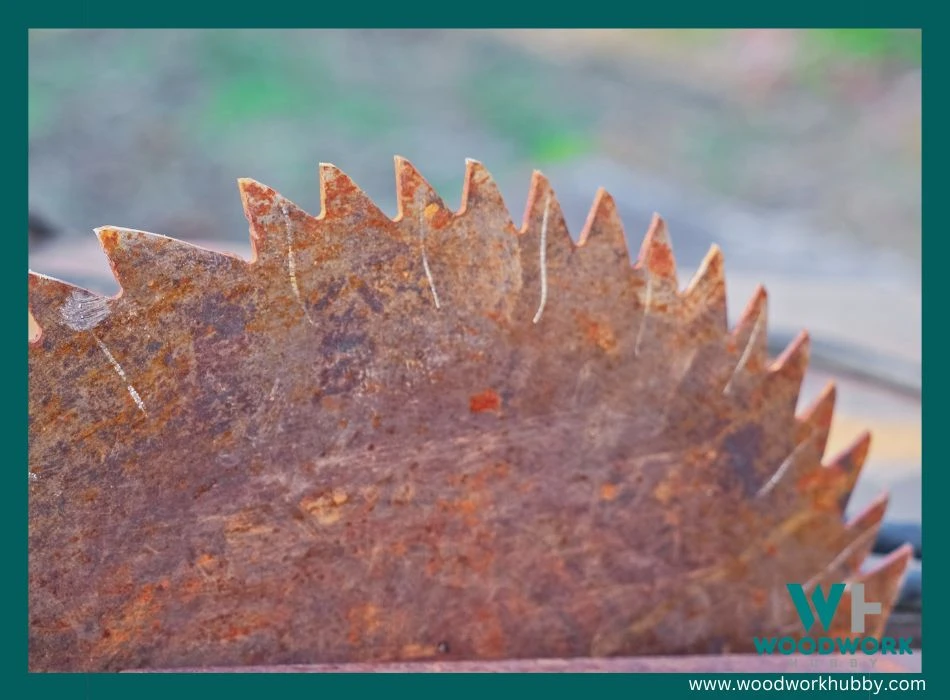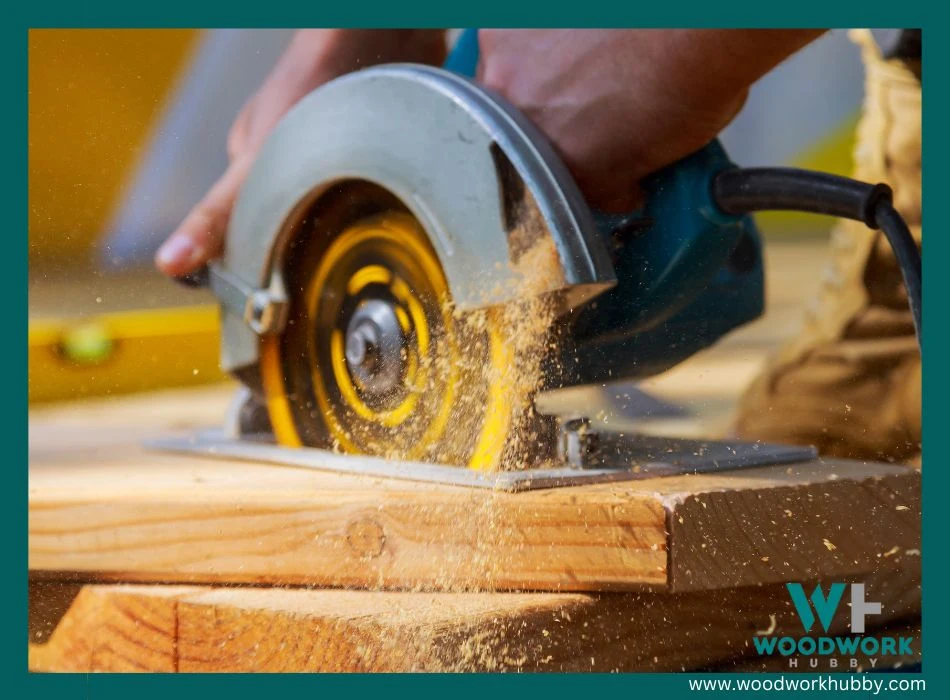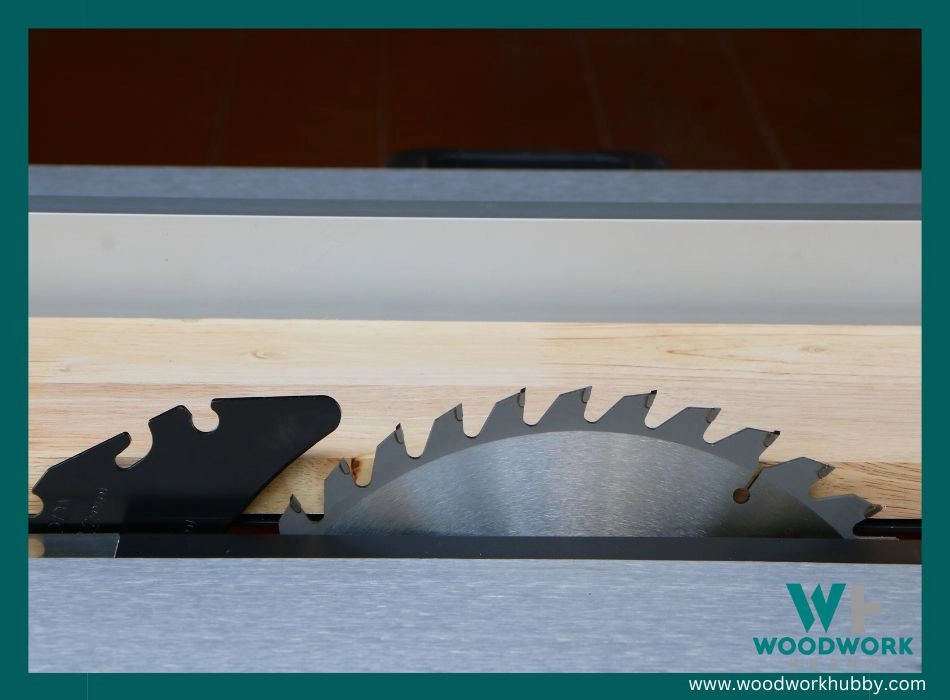Do you frequently notice that your table saw is burning wood while cutting? I know firsthand how frustrating it can be, especially when it jeopardizes the quality of your work. I looked into all the problems of why table saw is burning wood.
But don’t worry – through this blog post I’ll explore these causes in-depth and share practical ways to prevent wood burning on a table saw.
Key Takeaways
- A dull or dirty blade on a table saw can cause wood burning because it generates more heat and friction.
- Misaligned parts, like the fence guide and saw blade, can also lead to wood burning on a table saw.
- Choosing the wrong blade for your table saw can result in rough cuts that generate excessive heat and burn the wood.
- To prevent wood burning on a table saw, keep blades sharp and clean, ensure proper alignment of all parts, and use appropriate blades for different tasks.
Common Causes of Wood Burning on a Table Saw
There are several common causes of wood burning on a table saw, including a dull or dirty blade, misaligned parts, and incorrect blade selection.
Video on how to stop burning on the table saw
See what the best table saws for beginners are why I picked them. You might be surprised how good value these are.
Dull or dirty blade
A dull or dirty blade can cause big problems. Less sharp blades make more heat and friction. This makes the wood burn. A blade with dirt on it also works less well. It too can lead to the burning of the wood.
If you realize your blade is dull, be sure to take a look at what I wrote about can table saw blades be sharpened and can you do them at home?

Cleaning your blade, and keeping it sharp, are both important. Sharpness helps the blade work better and causes less heat that burns the wood. Blade maintenance needs regular checks for the best results on a table saw.
See the other article I wrote which goes over why your circular saw smokes. It reveals similar issues that you see in this post.
Misaligned parts
Misaligned parts often cause wood burning on a table saw. The fence guide and the saw blade need to be in line for precision cutting. If they don’t match up, you will cause excessive force against the side of the blade which will burn your wood.
It’s vital for woodworking safety and equipment health to check alignment before starting any project.
You may have noticed this if your saw blade overheats or you struggle with straight cuts. Fixing misalignment is part of regular table saw troubleshooting and maintenance. Don’t worry about taking time for these checks – they make sure your tool works well and keeps you safe.
Incorrect blade selection

Choosing the wrong blade for your table saw is a big no-no. This can lead to wood burning. Dull blades make rough cuts, and this causes too much heat. Too much heat will burn your wood and spoil your work.
Using the right blade is key to cutting wood cleanly on a table saw.
How to Prevent Wood Burning on a Table Saw

To prevent wood burning on a table saw, always keep the blades sharp and clean. Ensure that all parts of the table saw are properly aligned, and use appropriate blades for different tasks.
Keep blades sharp and clean
To prevent wood burning on a table saw, it’s important to keep the blades sharp and clean. This helps in creating a clean and smooth cut without generating excessive heat. Here are some tips to maintain sharp and clean blades:
- Regularly inspect the blade for any signs of dullness or damage.
- Use a blade cleaning solution to remove any pitch or resin buildup.
- Sharpen the blade using a proper sharpening tool or take it to a professional.
- Avoid cutting materials that can cause excessive wear on the blade, such as metals or dirty wood.
- Store the blades properly when not in use to prevent dust and debris buildup.
Video showing how to stop parts burning on table saw
Ensure proper alignment of parts
To prevent wood burning on a table saw, it’s important to ensure that all the parts are properly aligned. This will help eliminate friction and heat during cutting, resulting in smooth and accurate cuts on the wood. Here are some tips to ensure proper alignment:
- Check the positioning of components: Make sure that everything is in its correct place and tightly secured. Loose or misaligned parts can cause issues while cutting.
- Correct arrangement of parts: Ensure that the fences, guides, and miter gauges are properly aligned with each other and parallel to the blade. This will help in maintaining straight cuts without any burning.
- Precise alignment of pieces: Adjust the blade height and angle accurately according to your cutting needs. This will help in achieving clean cuts without excessive heat generation.
- Proper adjustment of table saw parts: Regularly inspect and adjust the rip fence, splitter, anti-kickback pawls, and other critical components for optimum performance. This will also contribute to preventing wood burning.
Alignment is important when cutting metal. See why in my article, can a table saw cut metal.
Use appropriate blades for different tasks
Using the right blades for different jobs is key to preventing wood burning on a table saw. Here are some things to consider:
- Choose a blade with the appropriate number of teeth for the job. For ripping cuts, fewer teeth are better, while more teeth are ideal for crosscuts and fine cuts.
- Use blades specifically designed for cutting different types of wood. For example, there are blades made for hardwood, softwood, plywood, and laminate.
- Consider the thickness of the wood you’re cutting. Thicker woods may require a blade with larger gullets to remove chips effectively.
- Look at the hook angle of the blade. A positive hook angle (20 degrees or more) is ideal for ripping cuts, while a negative hook angle (-5 degrees or less) is better for crosscuts.
- Pay attention to the diameter and arbor size of the blade to ensure it fits your table saw properly.
Conclusion – Why Table Saw Is Burning Wood
In conclusion, a table saw can burn wood for various reasons, including using a dull or dirty blade, having misaligned parts, and using the wrong type of blade. To prevent wood burning on a table saw, it is important to keep the blades sharp and clean, ensure proper alignment of all parts, and choose the appropriate blade for each task.
By taking these precautions, you can avoid wood burning on your table saw and achieve better results in your woodworking projects.
FAQs
1. Why is my table saw burning the wood?
Your table saw may be burning the wood due to a dull blade, incorrect cutting speed, or improper alignment between the blade and fence.
2. How can I prevent my table saw from burning the wood?
To prevent your table saw from burning the wood, make sure to use a sharp blade, maintain the correct cutting speed for your material, and ensure proper alignment between the blade and fence.
3. Can using a specific type of blade help prevent wood burning on a table saw?
Using a high-quality rip-cutting or cross-cutting blade specifically designed for your woodworking needs can help reduce friction and minimize the risk of wood burning on a table saw.
4. What are some other common causes of wood burn marks on a table saw?
Other common causes of wood burn marks on a table saw include feeding the stock too slowly or too quickly, applying excessive pressure against the fence while guiding the material through cuts, or using an inappropriate feed direction.
5. Is there anything else I should check if my table saw is burning wood?
If your table saw continues to burn Wood despite following the proper techniques and precautions mentioned above, it’s recommended you inspect for any issues with motor speed settings, belt tension, or pulley alignment that could be contributing to excessive heat buildup in addition to checking for any issues with electrical connections affecting motor performance.




